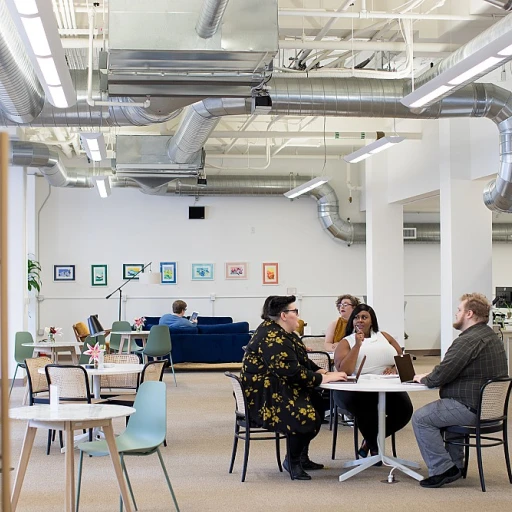Understanding Iteration Retrospectives
Gaining Insight into Iteration Retrospectives
Iteration retrospectives have become a fundamental element of agile frameworks such as Scrum, providing a structured platform for teams to engage in continuous improvement. A retrospective is a designated meeting where team members, including the scrum master and product owner, come together to assess and reflect on the latest sprint or iteration. This gathering is essential to iterate on both successes and areas for improvement within the software and product development processes. By adopting this agile practice, teams make real-time adjustments and create action items designed to optimize project management and product outcomes. Essentially, iteration retrospectives serve as a strategic opportunity for agile teams to collectively evaluate what elements of their workflows contribute positively to their objectives and which need alteration. During a retrospective meeting, feedback plays a critical role. The process involves the identification of what to stop, start, and continue, engaging team members in thoughtful consideration of their recent experiences. These conversations lead to actionable insights that foster continuous improvement, benefiting the overall project and team dynamics. The advantage of a structured retrospective is the focus it provides. With dedicated time allocated for these meetings, agile retrospectives drive a mindset geared towards enhancement. Furthermore, these sessions don't just pertain to software development; their principles are applicable across various domains, including human resources, underscoring their versatility. For a deeper understanding of the role agile practices can play within HR strategy, consider exploring embracing agile in HR for additional insights into how this mindset can be a game-changer for modern organizations.The Role of Retrospectives in Continuous Improvement
Retrospectives as a Catalyst for Continuous Transformation
Iteration retrospectives, often seen in agile methodologies, play a crucial role in driving continuous improvement. These retrospective meetings are designed to reflect on agile teams' performance during sprints, creating a space to identify areas for improvement and celebrate successes. The agile retrospective, often facilitated by a scrum master, encourages open feedback, which is integral to the scrum framework and agile project management.
By design, retrospectives provide agile teams with the ability to assess what action items were successful and what could be done better in the future. This form of reflection allows teams to enhance their processes over time, ensuring that each sprint becomes more efficient than the last. During a typical sprint retrospective, team members are encouraged to discuss what went well, what didn't, and what can be improved, following best practices such as 'start, continue, stop'. This structured feedback loop ensures that each project iteration builds on the learnings of previous cycles, thereby fostering a culture of continuous improvement.
The ability of retrospectives to drive change is not limited to software development alone. Across various industries, the practice of regular reflection can be applied to product development, process optimizations, and even within HR strategies to refine management approaches and improve team dynamics. By maintaining a steady rhythm of reflection and action, teams not only tackle immediate challenges but also implement long-term strategies that contribute to sustained growth and satisfaction.
One key advantage of retrospectives is their capacity to bring the entire team together, enhancing engagement and collaboration. This communal gathering permits all members to voice opinions and suggestions, ensuring that diverse perspectives are considered. Whether discussing process inefficiencies or project management hurdles, retrospectives provide a platform for collective problem-solving and strategic planning, ultimately leading to improved products and services.
Facilitating successful retrospectives requires careful planning and a commitment to honest communication among all involved. By regularly scheduling these meetings, agile teams can ensure that they remain aligned with organizational goals, while also keeping the focus on continuous enhancement of methodologies and outputs.
Implementing Retrospectives in HR Practices
Integrating Retrospectives into HR Practices
Incorporating iteration retrospectives into HR practices is crucial for driving continuous improvement within teams. Retrospective meetings, akin to those seen in agile scrum, provide an opportunity for teams to reflect on recent sprints and identify areas for improvement. By adopting this agile approach, HR can better support team members, fostering a culture of feedback and collaboration.
Implementing retrospective meetings in HR starts with organizing regular sessions at the end of each HR project or initiative, similar to the end-of-sprint rituals in software development. These sessions gather team members, from product owners to scrum masters, allowing everyone to share experiences and insights. By dedicating this time, teams can collectively pinpoint what worked well, what needs improvement, and craft actionable strategies moving forward.
Here are some best practices for HR teams to consider when implementing retrospectives:
- Foster a Safe Environment: Encourage open communication where team members feel comfortable sharing honest feedback, knowing their input is valued and respected.
- Define Clear Action Items: Ensure each retrospective concludes with specific action items that address identified issues, outlining responsibilities for carrying them out.
- Allocate Adequate Time: Schedule enough time for meaningful discussion, ensuring all aspects of the project or process receive attention without feeling rushed.
- Regularly Review Progress: Continuously revisit action items from previous retrospectives to gauge progress and reevaluate as needed.
- Embrace Continuous Improvement: Adapt the process to meet the evolving needs of the team, always aiming for incremental and sustainable improvement.
Master workforce planning by integrating these agile retrospectives, and witness the transformation in team synergy and project outcomes.
Benefits for Employee Engagement and Satisfaction
Enhancing Engagement and Satisfaction with Retrospectives
When it comes to boosting employee engagement and satisfaction, iteration retrospectives play a crucial role. These retrospective meetings provide a structured process for team members to share essential feedback on sprint successes and areas for improvement. Led by the scrum master, these sessions are designed to foster open communication and facilitate continuous improvement in HR practices.
The practice of retrospectives supports agile teams by creating a dedicated time for reflection on their processes and action items. This not only helps in identifying what is working well but also highlights the areas that need refinement. Consequently, teams experience improvement in product development and project management practices.
- Feedback Mechanism: Retro meetings create a safe space for team members to express their opinions and share feedback, which aids in fostering a culture of transparency and trust within the team.
- Team Empowerment: By actively involving all team members in the retrospective process, you provide them with a sense of ownership and accountability in the project’s outcome.
- Continual Progress: With the implementation of action items identified during agile retrospectives, teams can focus on both start continue and stop practices, driving further improvements over time.
Ultimately, retrospectives are not just about software development but are instrumental in agile scrum environments, ensuring that agile retrospectives contribute significantly to team satisfaction and engagement. As teams embrace regular iteration retrospectives, they will witness the benefits of continuous improvement, leading to better collaboration and project success.
Challenges and Solutions in Retrospective Implementation
Overcoming Hurdles in Retrospective Implementation
Implementing retrospectives in HR practices is not without its challenges. While iteration retrospectives can significantly boost continuous improvement, they require careful handling to be effective. Here, we delve into some common obstacles and potential solutions.
Time Constraints and Prioritization
One of the primary challenges teams face is finding the time for regular retrospective meetings. In a busy HR environment, it can be difficult to prioritize these sessions over immediate tasks. However, the key is to view retrospectives as an investment in the team's long-term efficiency and improvement. Scheduling regular, brief retro meetings can help integrate them into the workflow without overwhelming team members.
Ensuring Constructive Feedback
Another hurdle is fostering an environment where team members feel comfortable providing honest feedback. Agile retrospectives thrive on open communication, but this can be stifled if team members fear repercussions. Encouraging a culture of trust and respect is crucial. Agile teams can benefit from the guidance of a skilled scrum master who can facilitate discussions and ensure that feedback is constructive and focused on areas for improvement.
Actionable Outcomes
Retrospective meetings often falter when they fail to produce actionable outcomes. To combat this, teams should focus on identifying clear action items that can be tracked and reviewed in subsequent meetings. This practice not only helps in project management but also ensures that retrospectives lead to tangible improvements in HR processes.
Maintaining Engagement
Keeping team members engaged in retrospective meetings can be challenging, especially if they perceive them as repetitive or unproductive. Varying the format of these meetings and incorporating best practices from agile scrum and sprint retrospectives can keep them fresh and engaging. Encouraging participation and rotating the role of facilitator among team members can also boost engagement and ownership.
Adapting to Different Teams
Finally, what works for one team might not work for another. Retrospectives should be tailored to fit the unique dynamics and needs of each team. Agile retrospective techniques can be adapted to suit different HR teams, ensuring that the process remains relevant and effective.
By addressing these challenges head-on, HR teams can leverage retrospectives to drive continuous improvement and enhance overall team performance.
Case Studies: Successful Retrospective Integration
Real-World Examples of Retrospective Integration
Incorporating iteration retrospectives into CHRO strategies has proven successful in various organizations, illustrating the tangible benefits of this approach. Here are a few case studies that highlight how retrospective meetings can enhance continuous improvement within HR practices.
Tech Firm Boosts Team Collaboration
A leading tech company adopted agile retrospectives to improve team dynamics and project management. By regularly conducting sprint retrospectives, the teams were able to identify areas for improvement and implement actionable feedback. This process not only enhanced team collaboration but also streamlined product development cycles. The agile scrum framework allowed team members to voice concerns and propose solutions, leading to a more cohesive work environment.
Retail Giant Enhances Employee Engagement
A major retail organization integrated retrospectives into their HR practices to address employee satisfaction and engagement. Through regular retro meetings, HR teams gathered valuable feedback from employees, identifying key areas that needed attention. The continuous improvement process led to the implementation of new initiatives that significantly boosted employee morale and retention rates. The agile approach empowered team members to contribute to the company’s success actively.
Manufacturing Company Streamlines Processes
In the manufacturing sector, a company utilized retrospective meetings to refine their operational processes. By involving team members in sprint retrospective discussions, the organization was able to pinpoint inefficiencies and develop strategies for improvement. The feedback gathered during these meetings was instrumental in optimizing production workflows and enhancing overall product quality. The agile retrospective framework provided a structured way for teams to assess progress and set clear action items for future sprints.
These case studies demonstrate the power of retrospectives in driving continuous improvement across various industries. By fostering an environment of open communication and collaboration, organizations can effectively leverage agile retrospectives to achieve their strategic goals.



